Square Root of 12 - Definition, Examples, Quiz, FAQ, Trivia
Learn how to find and understand square roots with step-by-step explanations
What is a Square Root?
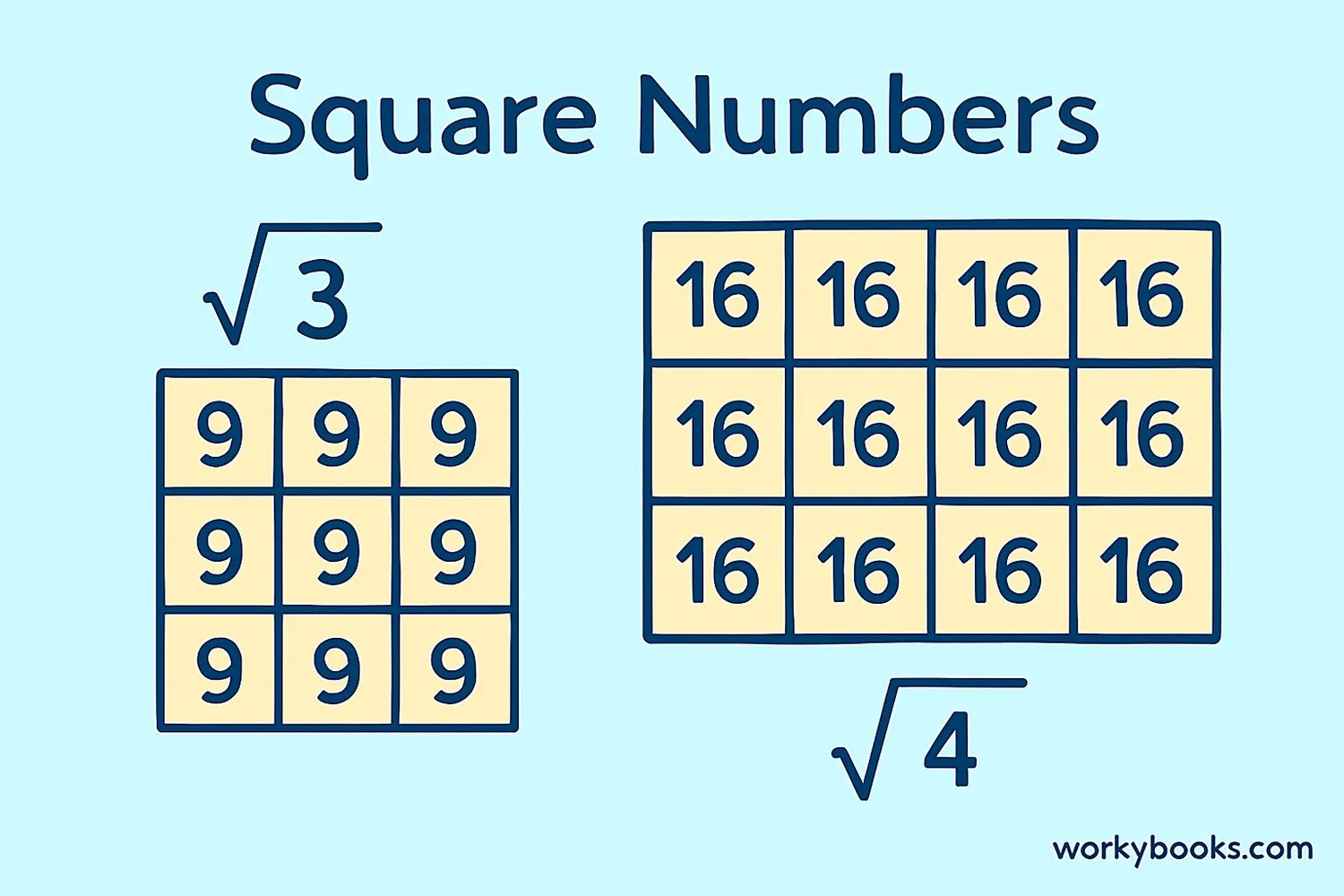
A square root is a special number that, when multiplied by itself, gives the original number. Imagine a square - the square root of its area is the length of one side!
For example:
- √4 = 2 because 2 × 2 = 4
- √9 = 3 because 3 × 3 = 9
- √16 = 4 because 4 × 4 = 16
Key Concept
Square roots are the opposite of squaring a number. Squaring means multiplying a number by itself.
Square Root of 12
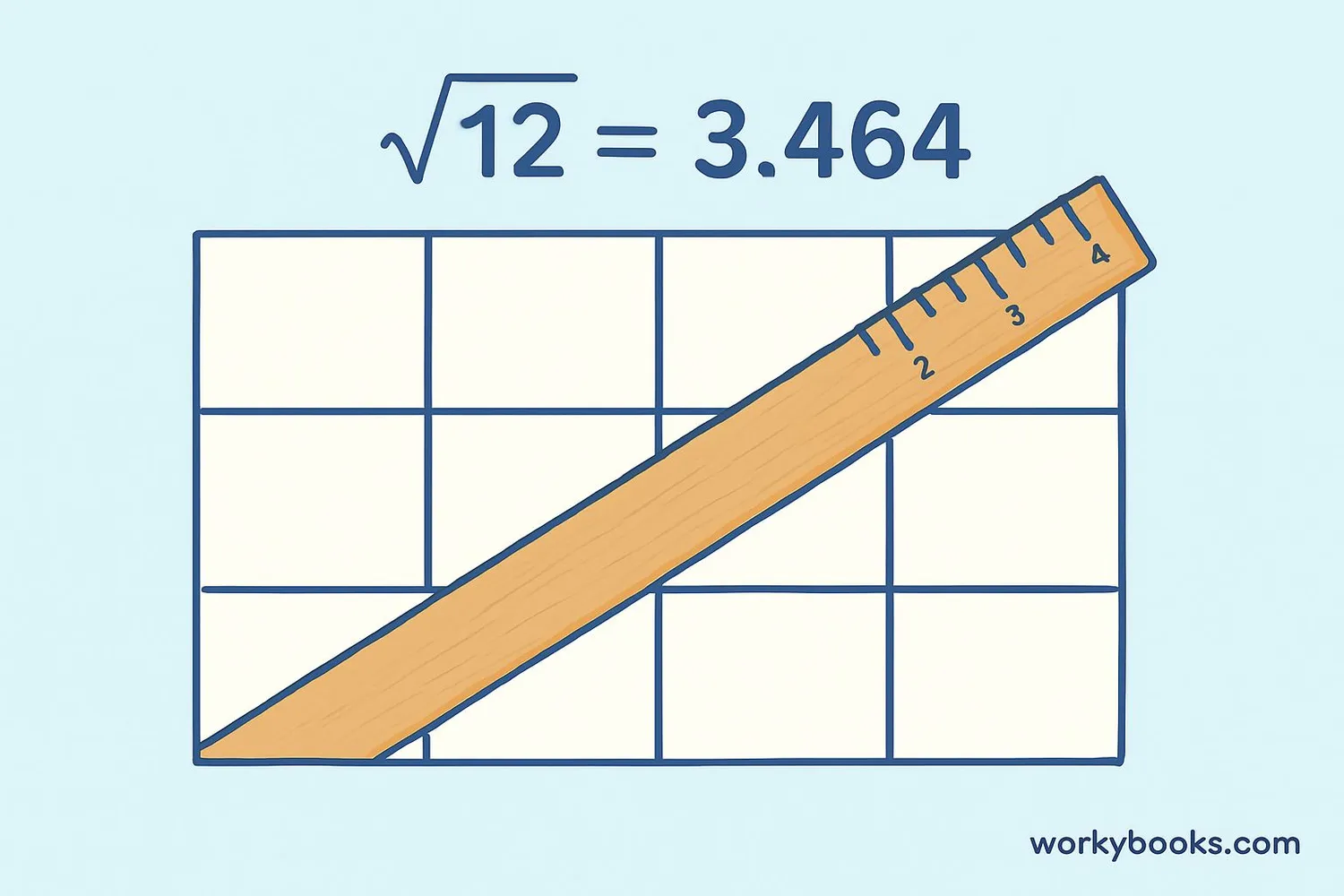
The square root of 12 is a number that when multiplied by itself equals 12. We write it as √12.
The exact value of √12 is approximately 3.464. But why isn't it a whole number? Because there's no whole number that multiplies by itself to make 12.
Mathematical Representation
We use the ≈ symbol to show that this is an approximation
Remember
√12 is not a whole number because 12 is not a perfect square like 9 or 16.
How to Find √12
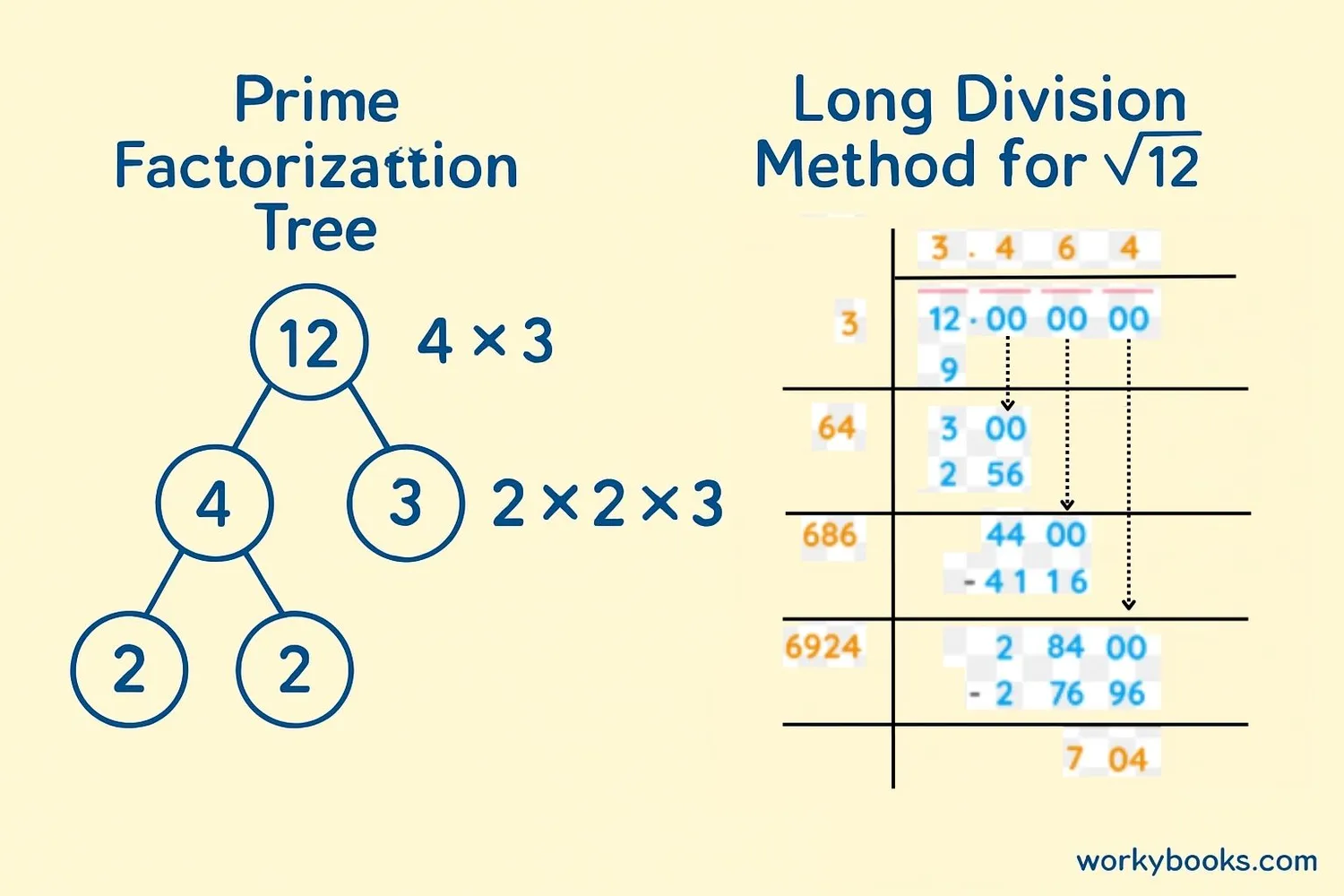
There are several ways to find the square root of 12. Let's explore two main methods:
Method 1: Prime Factorization
- Factor 12 into prime numbers: 12 = 2 × 2 × 3
- Group the prime factors into pairs: (2 × 2) × 3
- Take one number from each pair: 2 comes out of the radical
- Multiply the numbers outside: √12 = √(2² × 3) = 2√3
Method 2: Long Division
- Write 12 with a decimal and pairs of zeros: 12.00 00 00
- Find the largest square less than 12 (3×3=9)
- Subtract 9 from 12 to get 3, bring down two zeros → 300
- Double the quotient (3→6), find digit (x) such that 6x × x ≤ 300 (64×4=256)
- Subtract 256 from 300 → 44, bring down two zeros → 4400
- Double the quotient (34→68), find digit (y) such that 68y × y ≤ 4400 (686×6=4116)
- Continue to get √12 ≈ 3.464
Tip
The prime factorization method gives the exact simplified form (2√3), while long division gives the decimal approximation.
Is √12 Rational or Irrational?
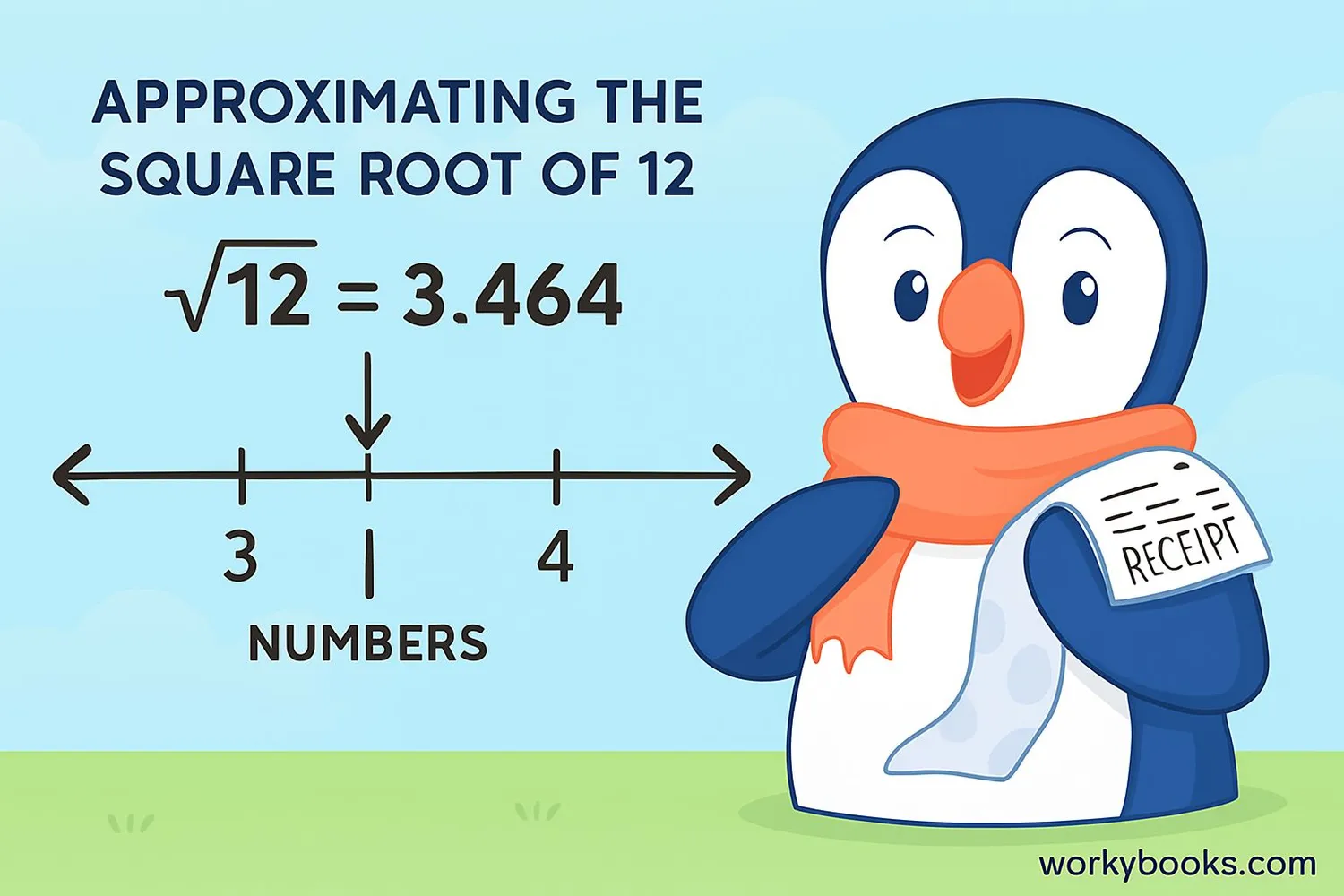
√12 is an irrational number. But what does that mean?
Rational numbers can be written as fractions (like 3/4 or 0.75). They have decimals that end or repeat.
Irrational numbers cannot be written as simple fractions. Their decimals go on forever without repeating.
Since √12 = 2√3 and √3 is irrational, √12 is also irrational. Its decimal form is 3.464101615... and it never ends or repeats!
Why it Matters
Irrational numbers like √12 help us describe real-world measurements that aren't perfect whole numbers or fractions.
Square Root of 12 in Different Forms
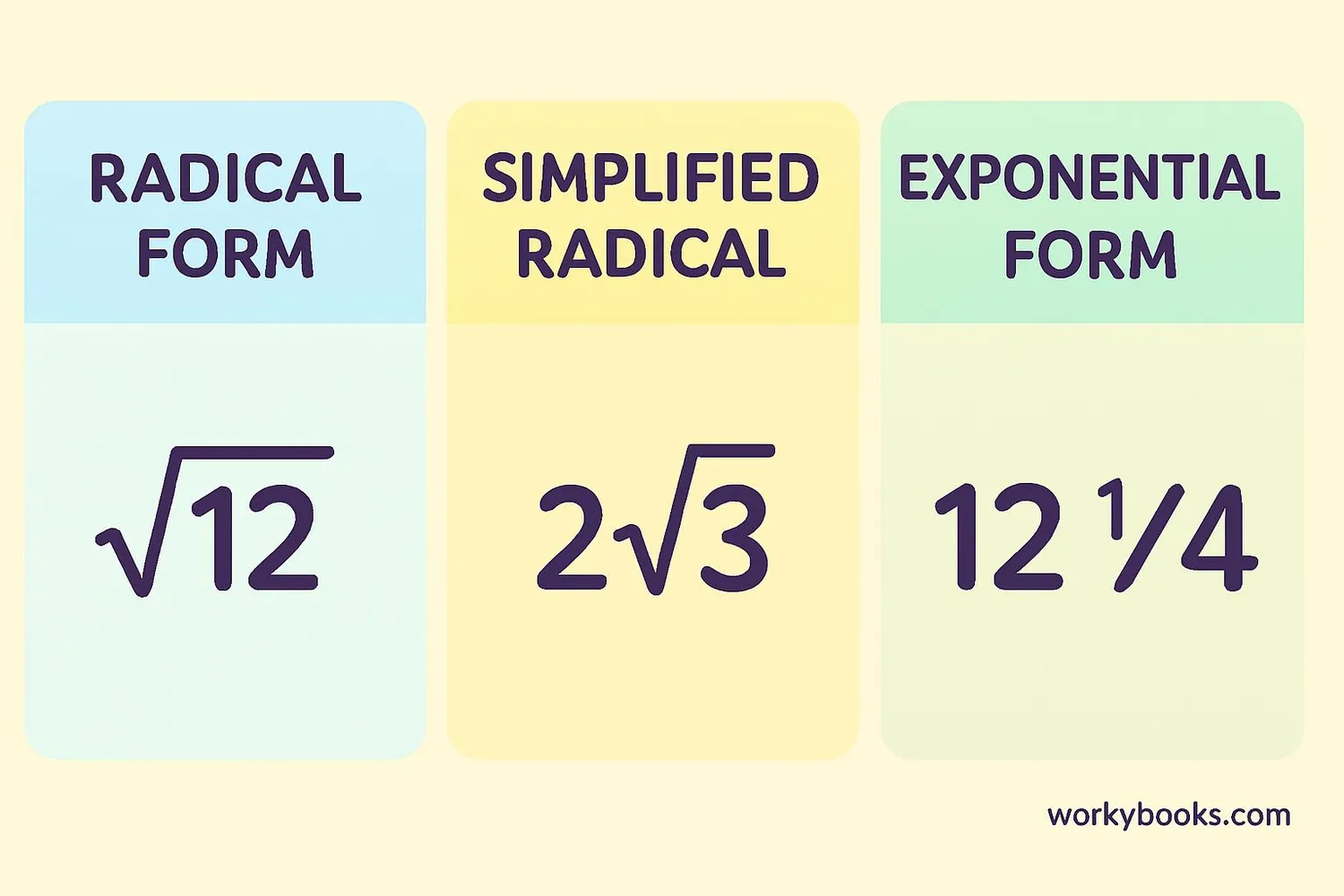
The square root of 12 can be expressed in several ways:
Radical Form
Simplified Radical Form
Exponential Form
Decimal Form
The simplified radical form (2√3) is the most precise way to write √12 without decimals. The exponential form (12½) shows the relationship between square roots and exponents.
Which Form to Use?
Use simplified radical form for exact values, decimal form for measurements, and exponential form for algebraic calculations.
Square Root Quiz
Test your knowledge with this 5-question quiz. Choose the correct answer for each question.
Frequently Asked Questions
Here are answers to common questions about square roots:
Math Trivia
Discover interesting facts about square roots and mathematics:
Ancient Square Roots
The Babylonians calculated square roots as early as 1800 BC using geometric methods. Their approximation for √2 was accurate to six decimal places!
Irrational Discovery
The ancient Greeks were shocked to discover irrational numbers. According to legend, the mathematician Hippasus was drowned for revealing that √2 is irrational!
Square Root Symbol
The radical symbol (√) was first used in 1525 by mathematician Christoph Rudolff. The horizontal bar was added by Descartes to make it easier to read.
Memory Feat
The world record for reciting the most digits of √3 is 10,000 digits! For √12, the decimal starts with 3.4641016151377544...





